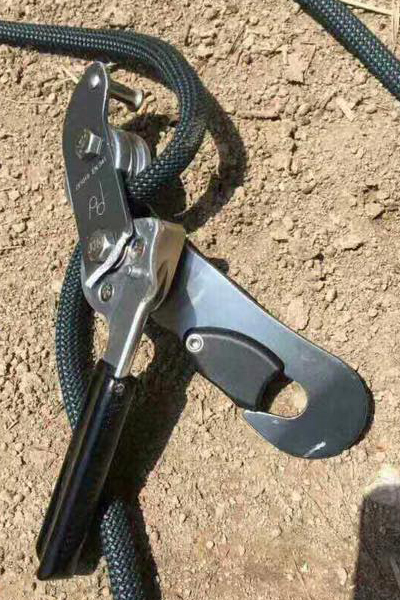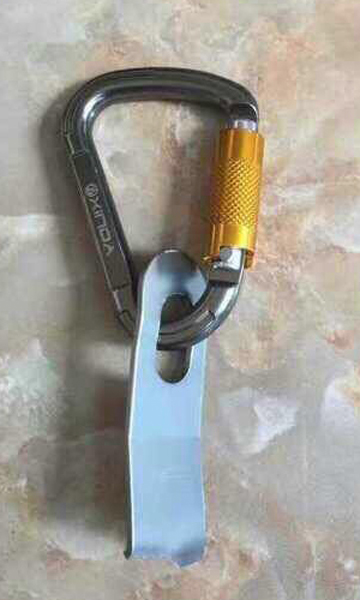Technical Details
I acquired my Good Makings from Yungfeng Xiao in 2014.
My Good Makings is 217 mm. tall, 64 mm. wide, 32 mm. thick, and weighs 342 g.
The two side plates are made of 2.95 mm. aluminum.
One side plate
pivots to allow threading the rope. The lower ends of the side plates
are bent to converge at the attachment point, which consists of
a 16.1 mm. wide, 29.7 mm. high hole on the fixed plate and a slot on the other. Neither of
the attachment points are beveled. The upper portion of the slot is covered by a plastic gate. The gate pivots on a steel rivet, and a spring set in a deep slot
closes the gate. With the gate closed, the opening is only 16.6 mm
high.
The lower bollard is part of an autostop assembly. It is a skeletonized plated stainless steel casting with internal reinforcing ribs and an integral cam. The lower surface of this bollard has an 8.5 mm. wide, 1.8 mm. deep U-shaped rope groove. The upper surface is flat. An aluminum
handle is attached to the fixed side plate side of the lower bollard with a 5 mm. countersunk machine screw.
The handle has a hard plastic cover for comfort. The lower bollard and handle assembly rotate on a bushing on the 8 mm. lower bolt. A concealed spring is strong enough to keep the handle
in the disengaged position, but is weak enough to function only
during storage. Friction from the main rope’s passage tends to
turn the lower bollard and force the toothed cylinder towards
the upper bollard, thus locking the rope and ideally arresting
the descent. The rappeller uses the handle to keep the autostop
feature disengaged. A pin on the fixed-plate side of the autostop assembly limits the motion by hitting the fixed plate before the lower bollard cam nose contacts the upper bollard.
The upper bollard is turned aluminum
with a milled slot to keep it from rotating on the fixed side
plate. The bollard is bolted to the
fixed side plate with an 8 mm. bolt and a shoulder nut. The pivoting side plate pivots on the lower bolt and has
a slot to allow clearing the upper nut. The upper bollard has a narrow 7.3 mm. wide, 4.3 mm. deep U-shaped rope groove. The upper bollard is cut away on its lower side to provide
a flat surface to act as an anvil for the cam action of the autostop
feature. A rounded 10 mm. steel cylinder is pressed into
a hole in the lower surface of this bollard, and acts as a wear
resisting bar.
The third (auxiliary) rod consists of a 12 mm. stainless rod turned and pressed into the fixed side plate, and then riveted. Before assembly, a 17 mm. wide surface is turned to 7.4 mm. where the rope runs.
The pivoting side plate has a decorative groove pressed into it. This groove has no structural significance.
The pivoting side plate is printed with a rigging icon, "Ø9-12mm," and "0614." The rear side plate is printed with the Good Makings logo, "GM," "CE1019," "EN341," and another rigging icon. The 8 mm. bolts are stamped "MIT."
The Good Makings stop bobbins is one of several that are all variations of the same basic design. The ones in my collection that I've evaluated are as follows:
| Image |
Stop Bobbin |
Allowed Rope |
Notes |
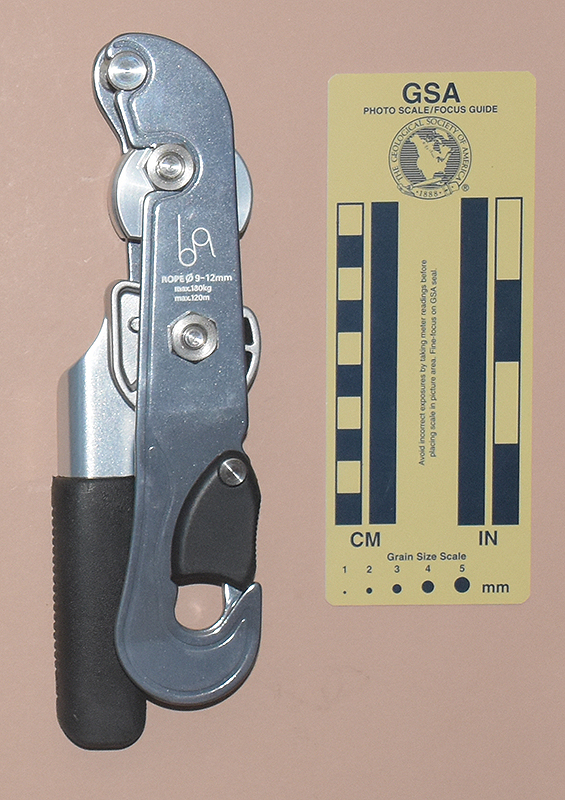 |
Chinese |
9-12 mm. |
- The rigging illustration on the rear plate is reversed.
|
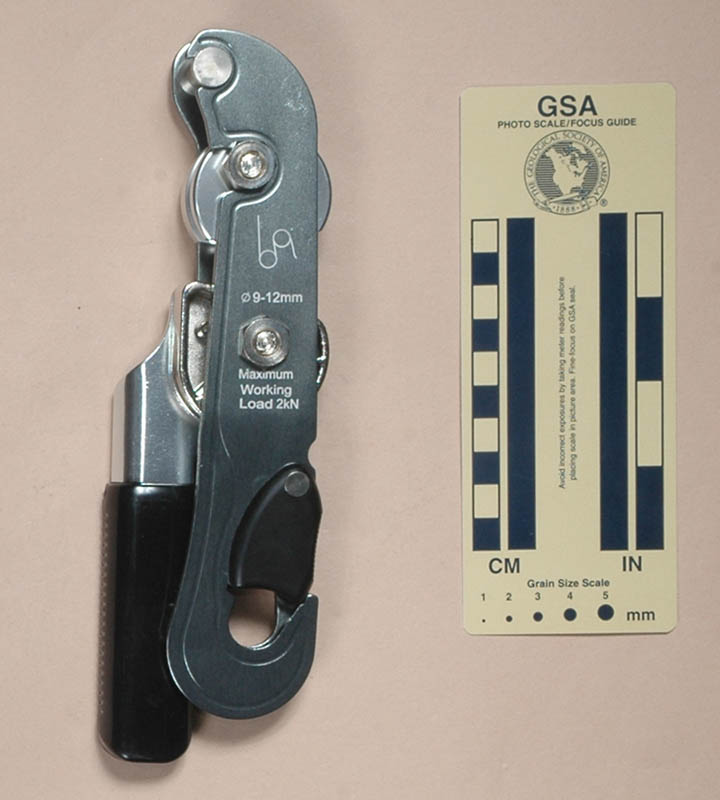 |
Climb Tech |
9-12 mm. |
--- |
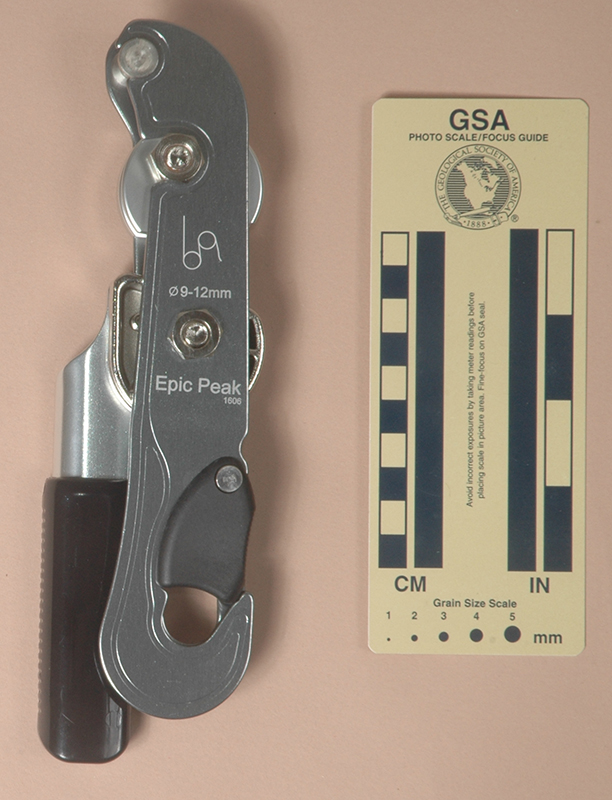 |
Epic Peak |
9-12 mm. |
--- |
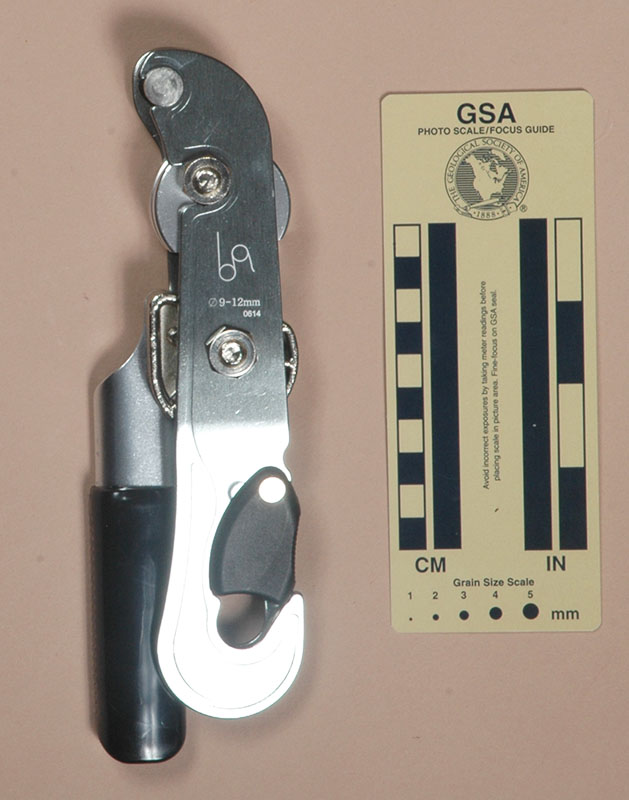 |
Good Makings |
10-12 mm. |
- The plating on the lower bollard is poor, and it was flaking off before it arrived. I suggest
stripping it off the running surfaces before use.
|
 |
NTR |
9-12 mm. |
--- |
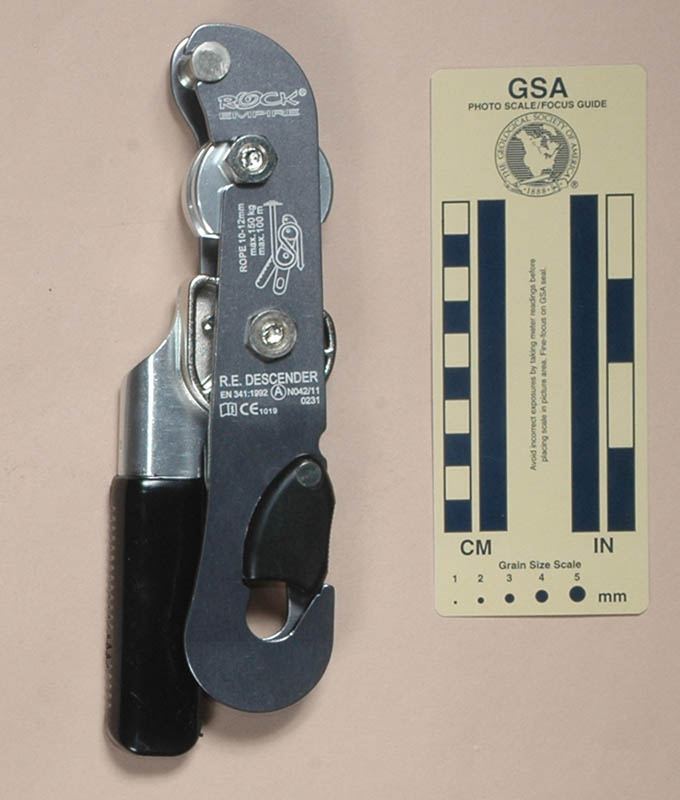 |
Rock Empire |
10-12 mm. |
- No decorative groove pressed into pivoting side plate.
|
|
| Image |
Stop Bobbin |
Allowed Rope |
Notes |
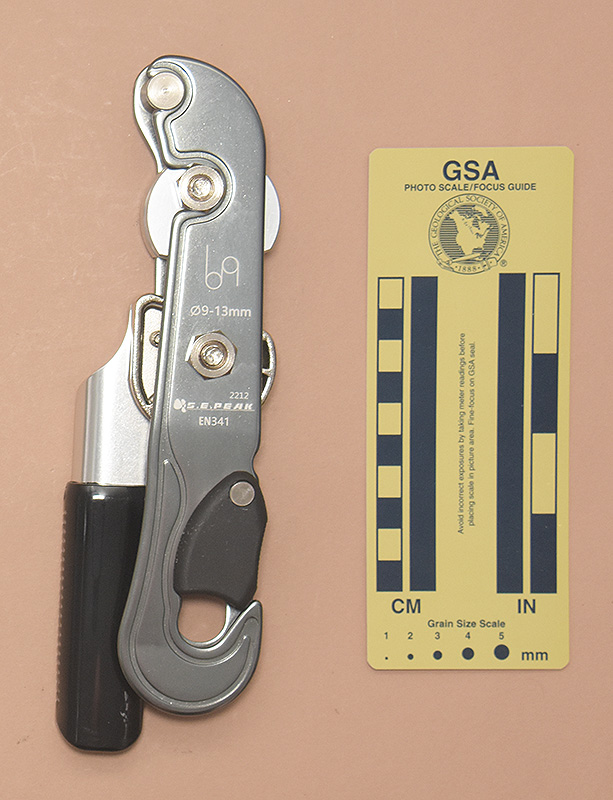 |
S.E.Peak |
9-13 mm. |
--- |
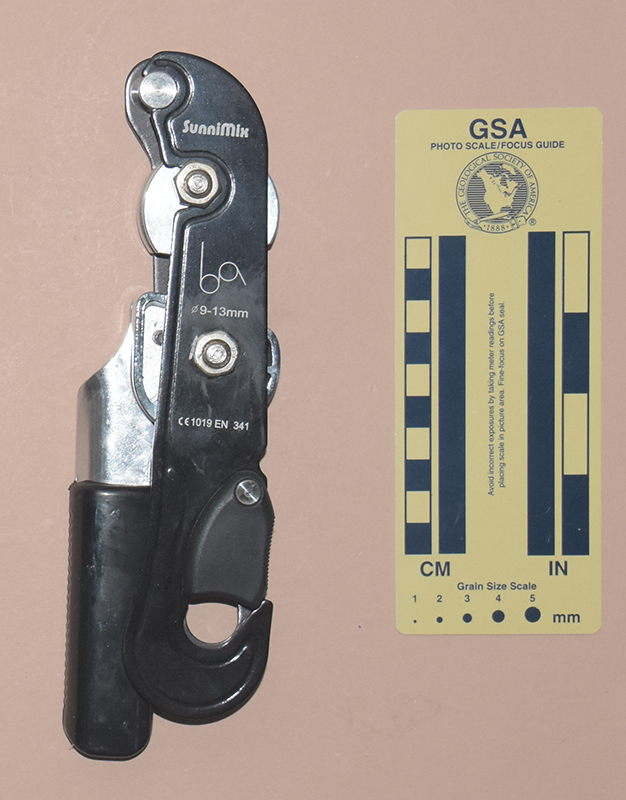 |
SunniMix |
9-13 mm. |
--- |
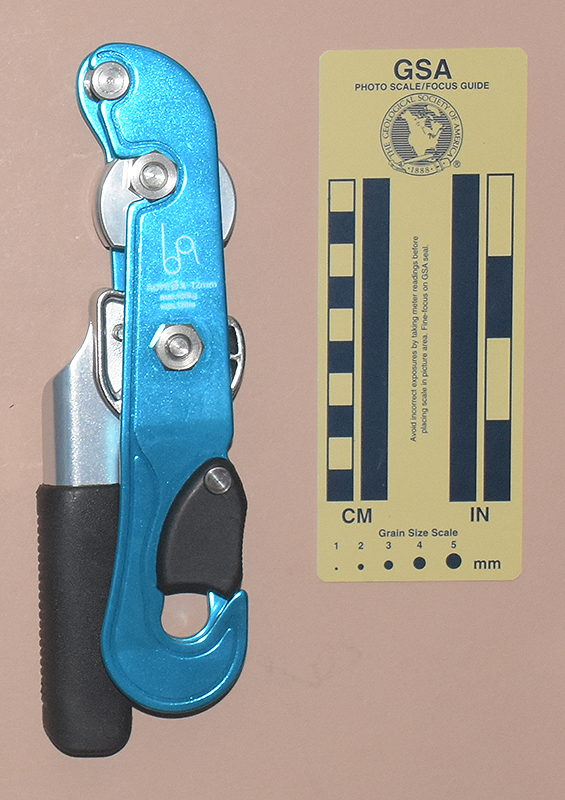 |
Tupa |
9-12 mm. |
- The rigging illustration on the rear plate is reversed.
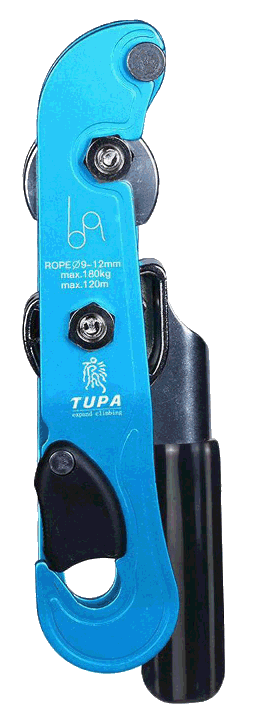 The Chinese advertise a left-handed Tupa on eBay, but have not been able to obtain one. Each time I place an order, I receive a right-handed Tupa instead.
The Chinese advertise a left-handed Tupa on eBay, but have not been able to obtain one. Each time I place an order, I receive a right-handed Tupa instead.
|
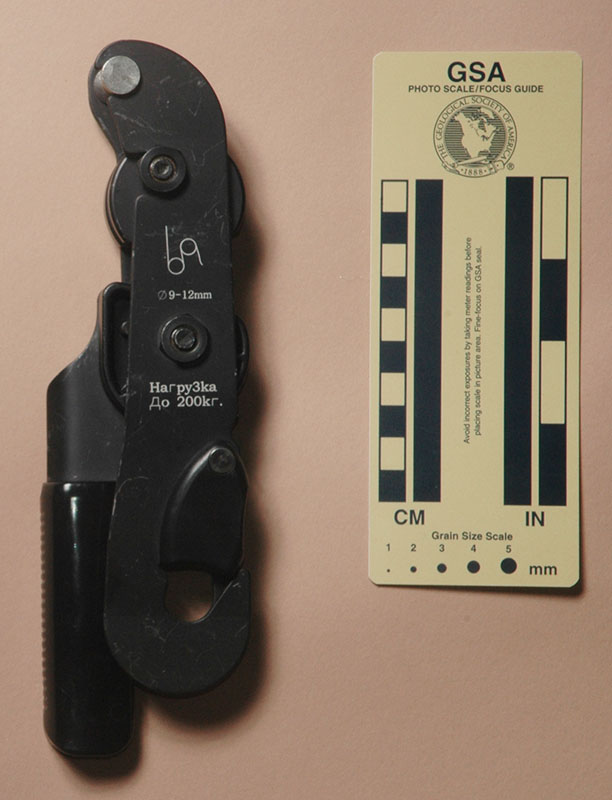 |
Vento (Венто) |
9-12 mm. |
- Painted bollards that can leave a mess on the rope.
- No decorative groove pressed into pivoting side plate.
|
|
These bobbins appear to be made by the same Chinese OEM, so I find the difference in allowable rope sizes rather amusing and certainly unreal. I suspect that the differences are due to different descenders being tested at different times, and the rope sizes printed reflect the rope sizes used during the corresponding tests.
These descenders clearly "borrow" a lot of its design features from the Petzl Stop Bobbins. The shape of the frame, the details of the upper bollard, the shape of the lower bollard casting, and the shape of the plastic gate closely resemble those on later (and sometimes earlier) Petzl descenders.
There are a number of things about these bobbins which I dislike, although my opinions have mellowed a bit in the past couple years:
- Originally, I disliked the lower bollard.
- The skeletonized casting may be lighter than the solid one found on earlier Petzls, but the shape does not
have nearly the wearing capacity that those machined bollards had.
- Steel is not as good a thermal conductor as
aluminum. When rappelling too fast, the lower bollard can easily
overheat.
- The handle is bulkier than the one on the Petzls.
- The auxiliary bollard works very well for keeping the rope
on the upper main bollard without binding, but is less satisfactory
when used as part of the braking system.
- The rod is too small to function well as a third braking surface.
- There is no means to ensure that the rope stays on the rod reliably,
- The rod is located where it forces the rope into an inconvenient position.
- This last point
is particularly noticeable if the trailing rope passes through
a maillon clipped to the seat maillon. In this case it requires
too many contortions to switch from the two bollard mode to the
three bollard mode.
The gate design effectively reduces the risk of having the seat
carabiner force the gate open. It also eliminates the corrosion
problem that I've had with the metal gates on some of my early Petzl bobbins (the later Petzl bobbins also have plastic gates). Overall, I think the gate looks good,
assuming that it holds up under the abuses inherent in serious caving, but
the wire gate on the Russian Stop Bobbin,
Version B is a worthy alternative.
Aside from the poor quality plating on the Good Makings lower bollard, these are fairly well made. Each gives a better visual first impression than the similar pre-2019 Petzl Stop, but functionally, I don't see a significant advantage of either. If I compare these to the earliest Petzl Stops, I would give a small edge to the Petzls because of their 15% lighter weight and my preference for and aluminum lower bollard.
Several people have expressed concerns with Chinese metallurgy. We do not have enough experience with Chinese-made climbing equipment to know how well we can trust it. I suspect that the Chinese equipment that has passed CE standards testing is fine. One failure posted on Facebook involves a Chinese-made bobbin. What I see in the photos and in the Facebook video looks like the result of user error, not poor metallurgy. It appears that the rappeller clipped into only one of the side plates. When rappelling with only one side plate loaded, any bobbin could fail. We should not dismiss Chinese devices simply out of prejudice; but having said that, I would like to see more independent testing that is not based on testing to pass commercial standards.



